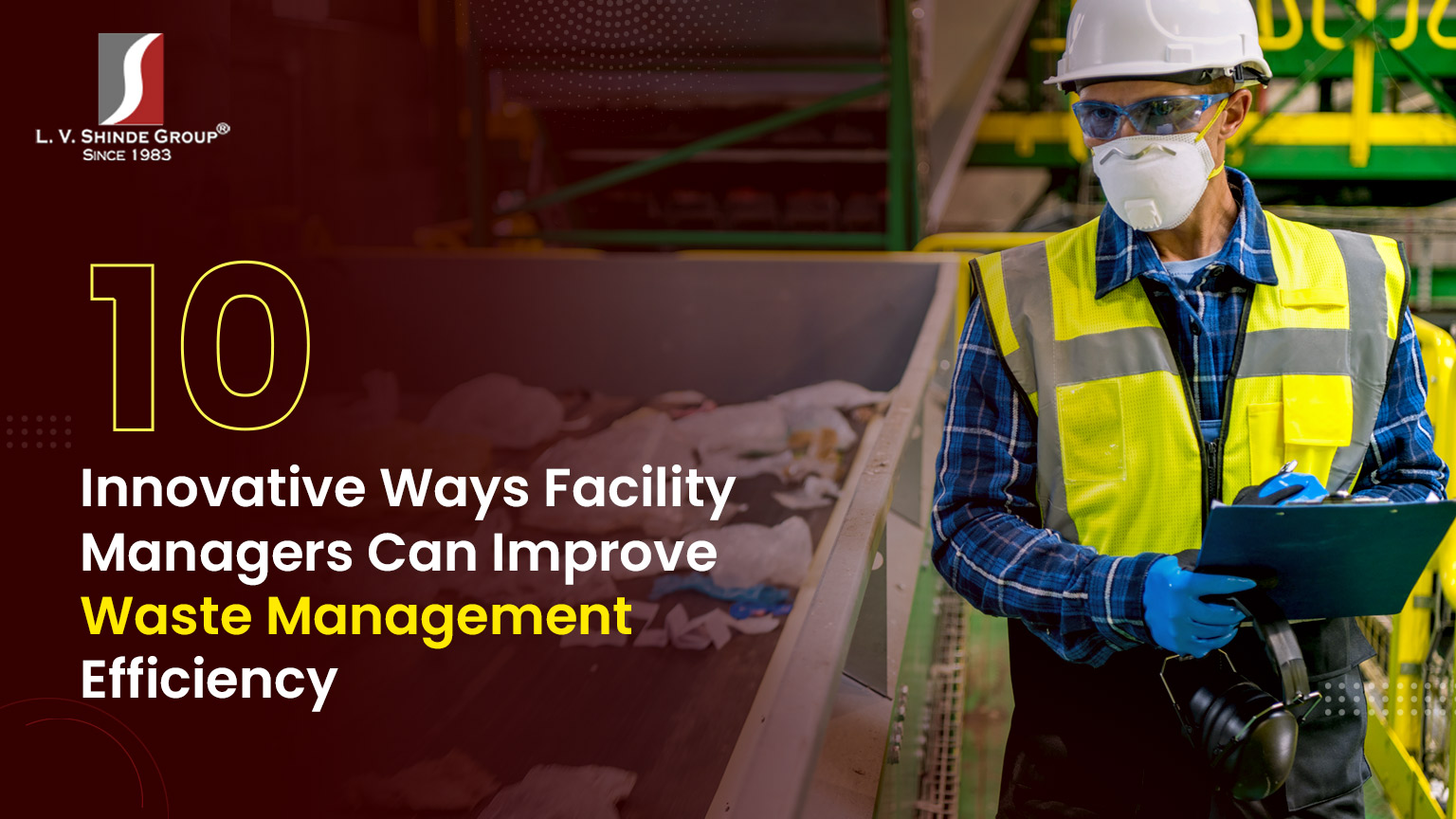10 Innovative Ways Facility Managers Can Improve Waste Management Efficiency
Why is Waste Management Important?
Waste control is more than just removing garbage; It’s about building a sustainable future. Other than removing waste, it is also about making our environment healthier and more sustainable. It acts as the heartbeat of the operation, ensuring that every waste is well managed.
Facility managers play a key role in this journey, overcoming obstacles and innovating for a cleaner, greener future. Let’s take a look at how facility managers can use their creativity and initiative to change waste management.
The Challenges Faced by Facility Managers in Waste Management
Facility managers face many waste-related challenges, from dealing with waste types to the need for environmentally friendly solutions.
Consider the following challenges.
1. Balancing Practice: Dealing with types of waste:
Facility managers handle several types of waste, each with its own disposal method. It’s likely to find the right balance between recycling, composting and proper disposal.
2. Tech decisions: Choosing the best waste management equipment
There are many technologies for waste management, and facility managers must choose the one that best meets the needs of their facility, while maintaining simplicity.
3. Buying green: Environmentally friendly decisions
Sustainable purchasing includes environmentally friendly decisions when purchasing goods and services. Facility managers should look for vendors committed to environmental friendliness.
4. Employee training in responsible waste management is a collaborative effort.
The effectiveness of waste management depends on the level of participation. Facility managers should spend money on training programs to teach employees how to properly dispose of and recycle waste.
5. Finding cost-effective waste management solutions
When dealing with restricted budgets, facility managers must strike a balance between waste efficiency and cost efficiency.
10 Innovative Ways Facility Managers Can Improve Waste Management Efficiency
Now, let’s dive into the creative world of waste management:
1. Use waste separation:
Encourage staff to separate source waste into separate waste for recycling, composting, and general disposal. This will make it easier to recycle and compost more materials, reducing the amount of waste sent to landfills.
2. Invest in smart bins:
Features that detect when they are full and direct employees to put waste in smart bins can help to reduce excess bins and ensure that garbage a collection has improved
3. Use of waste-to-energy technologies:
Waste-to-energy technologies can convert waste into electricity or heat. This can help reduce the amount of waste sent to landfills and promote renewable energy.
4. Bring compost:
Composted food and elephant manure can be used to make nutrient-rich soil amendments. Encourage employees to compost or work at home to reduce organic waste going to landfills.
5. Educate employees about waste reduction:
Provide training to employees on how to reduce waste in their daily activities. This could include advice on food waste reduction, recycling and recycling.
6. Implement a waste management system:
A monitoring system can help a facility identify waste management systems and track progress on waste reduction efforts. This information can be used to make informed decisions about waste management strategies.
7. Work with local businesses:
Work with local businesses to replace waste. For example, a restaurant might donate compost scraps to a compost facility, while a construction company might donate scrap metal to a recycling center.
8. Advocate for sustainable programs:
Support programs that encourage waste reduction and recycling. This could include requiring a ban on single-use plastics or encouraging composting of compost.
9. Use technology to manage waste:
Use technology to monitor waste generation and identify areas for improvement. This could include the use of sensors to monitor waste accumulation or waste analysis software.
10. Invest in waste surveys:
Identify areas where waste can be reduced through regular waste surveys. This can help identify new opportunities for waste reduction and recycling.
FAQs about Ways to Improve Waste Management Efficiency
Q1. Can waste management efficiency improvements lead to cost savings for facilities?
Efficient waste management reduces disposal costs and creates opportunities for cost savings
Q2. What are the potential benefits of on-site renewable energy solutions for waste management?
Not only does renewable energy turn into sustainable energy sources, it can also power waste-to-energy technologies.
Q3. What innovative technologies can be used for waste tracking in facilities?
AI-based solutions provide accurate and real-time information, making waste management more efficient.
Q4. How does employee training contribute to better waste management?
Well-educated professionals tend to be waste management advocates, ensuring that sustainable practices are followed.
Q5. What role does sustainable procurement play in improving waste management efficiency?
Sustainable purchasing links purchasing decisions to environmental goals, supporting environmentally friendly choices.
Conclusion
As facility managers begin their journey to new waste management systems, they must realize that it is key to turn challenges into opportunities. Through sustainable practices and practical solutions, they are paving the way for cleaner, greener and more efficient buildings.
Transform Your Waste Management System with Supreme Facility Management!
Supreme Facilities Management stands as a beacon of progressive waste management.
Unleash the power of innovation as we tailor solutions to efficiently handle your waste, ensuring sustainability and cost-effectiveness. Join us in this journey towards a cleaner, greener future. Take the leap today and transform your waste management with Supreme Facility Management


